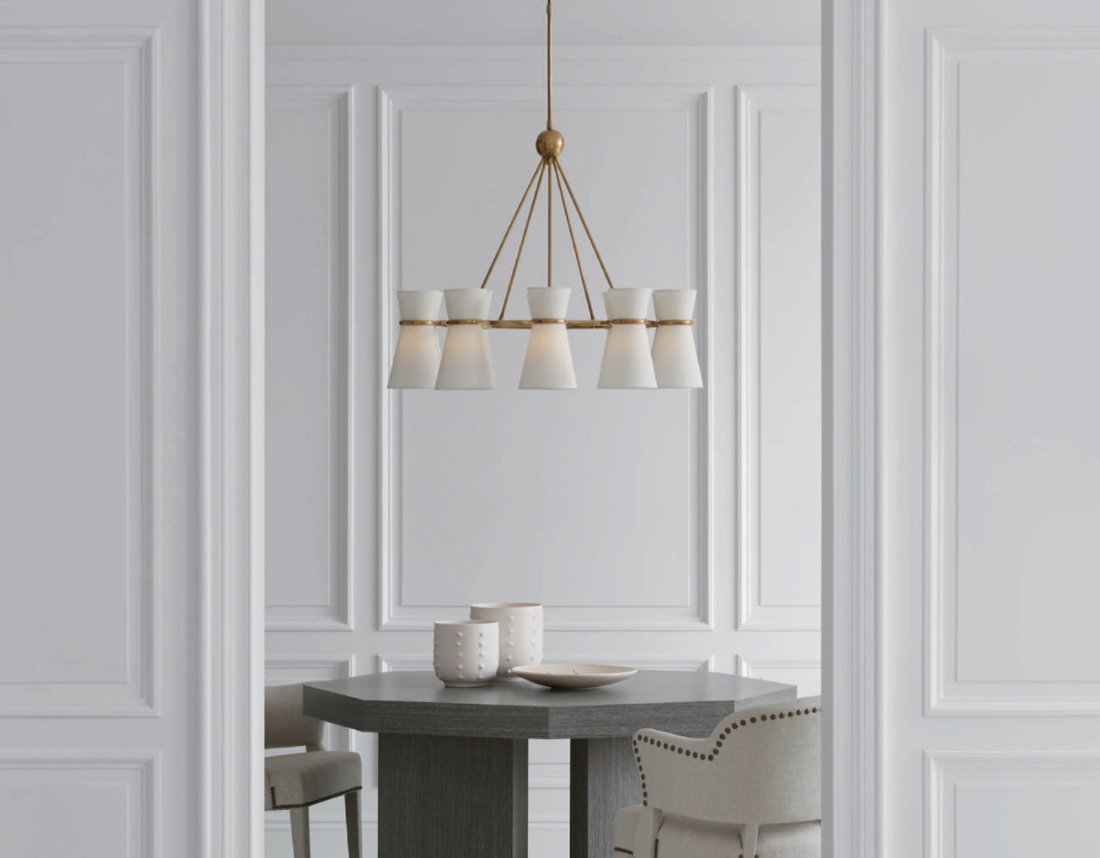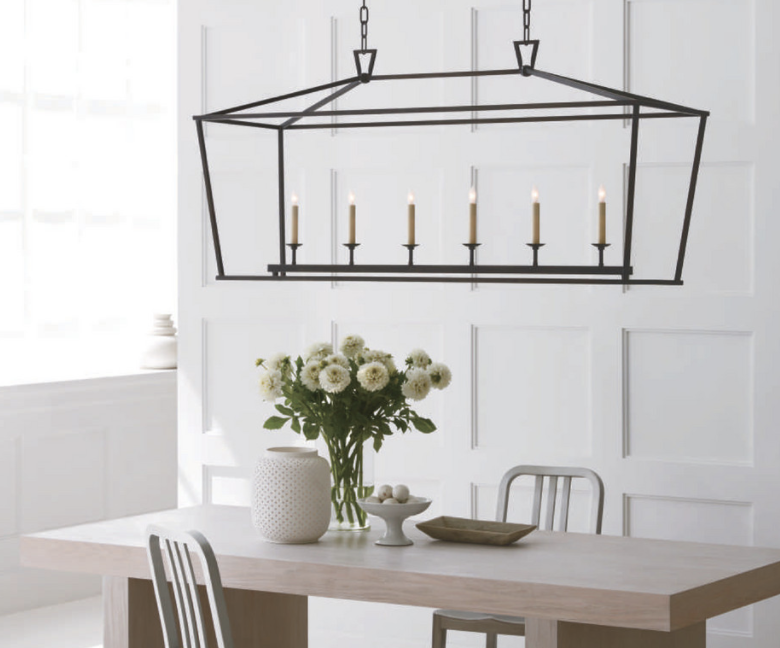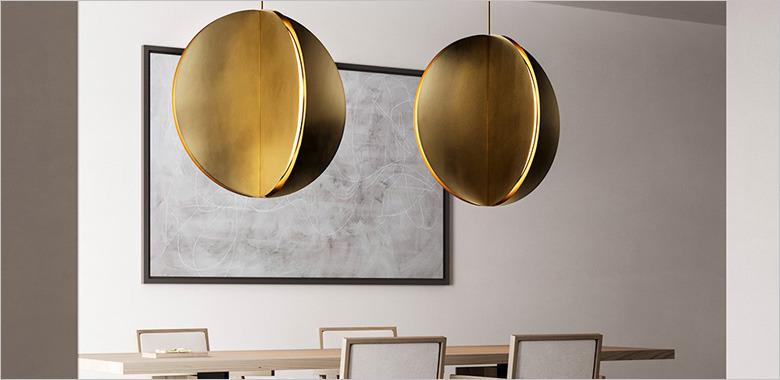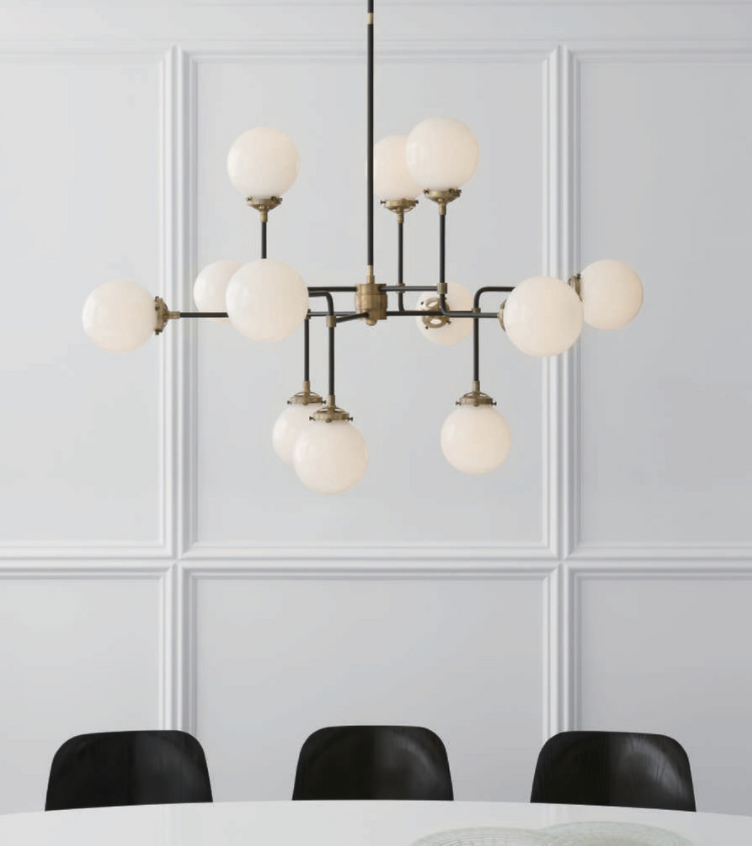Secret Two: Determine where you want the light to be directed
There are a few main styles when it comes to dining room chandeliers. They typically direct light upwards towards your ceiling, downwards onto the surface of your table, or have a “hidden” light source that bounces the light around the whole room.
There are pros and cons to each style, so it’s important to determine which features you need most from your lighting. Here are some scenarios and solutions
1. If you use your table as your home office desk (or homework or hobby station):
If your table doubles as a work desk when you’re not using it as your dinners, we recommend opting for a fixture that directs the light downwards towards your table's surface. This will not only provide beautiful light on your dinner plates, but also allow for direct task light when you need to get to work. PRO TIP: We always recommend a dimmer in this case! Having the flexibility to increase your light when working, and decrease your light for relaxed dinners is so important!

2. Your dining room is mainly used for special occasions and holidays
Maybe you eat at your island or kitchen table and reserve your dining room for those special, fancy dinners. If this is the case, your focus is probably more on setting the feel and tone for these events. You likely aren’t looking for bright, directed light onto your table, rather a moody glow that beautifully illuminates your space.
Whether it’s a cozy family holiday dinner, or a wine and dine evening with friends, we suggest lighting that is directed upwards towards your ceiling. By adding a dimmer, you can adjust your light levels, and watch the light bounce evenly off your ceiling and walls. As an added benefit, this also means no glare or harsh light in guests or familys sight line as they enjoy your wonderfully prepared meal.

3. You have other light sources in your space
If you have other light sources such as recessed lighting or lamps in your dining room, you may be less concerned about your dining room fixture providing enough light. In this case, we say opt for a statement fixture with a hidden light source.
When you don’t have to focus as much on light output, you can turn your attention to the visual and structural elements of the fixture. Fixtures with hidden light sources tend to provide less actual light in the space, however often boast added elements of design and interest.

Secret Three: When in doubt, go big (within reason)!
On the fence about two sizes or styles but unsure about which to select? While we provided a simple equation to help determine the diameter of your chandelier, that acts more as a guide than a hard rule. With today's trends in everything from fashion to decor, we are seeing oversized statements everywhere.
As long as the fixture can hang about 30” to 36” off the top of your table (we don’t want tall guests and family members hitting their heads as they reach for the salad!), we suggest opting for oversized fixtures. However, keep the width of your table in mind. You don’t want a fixture that is equal to or exceeding the width of your table, unless it is tight up to the ceiling. A good guide is ensuring your fixture is no more than 6” from the most narrow sides of the table.Fortunately, most fixtures today are offered in an array of sizes and scales.

Once you find the style you like, there is a good chance that there will be a size or a similar look that will suit your space perfectly. Still unsure? Our lighting consultants are always here to offer a hand in selecting your fixtures. Explore our website or drop by our showroom and talk to us about your space!